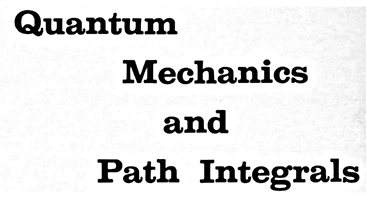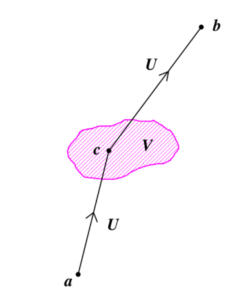はてなブログ:「ファインマンさんの肩に乗って晴耕雨読の日々」に書いていた記事を今日から順にこちらに移していこう.先ずはファインマン経路積分の第6章の問題をまとめて移してしまう.

Problem 6-1
Suppose the potential can be written as , where is small but is large. Suppose further that the kernel for motion in the potential of alone can be worked out ( for example, might be quadratic in and independent of time ). Show that the motion in the complete potential is described by Eqs. (6-4), (6-11), (6-13), and (6-14) with replaced by , where is the kernel for motion in the potential alone. Thus we can consider as a perturbation on the potential . We can say that is the amplitude to be scattered by the perturbing part of the potential ( per unit volume and per unit time ). is the amplitude for the motion in the system in the unperturbed potential .
この場合, 式 (6.1) に相当する式は次となる:
今度は, ポテンシャル の内の だけを「ポテンシャルの小さい部分」とすることで, やはり式 (6.3) と同様な級数展開が出来る:
これを式 (1) に代入すれば, 式 (6.4) に相当する式として次が得られる:
ただし式 (6.5) の に相当するのは, 次の となる:
また や は次となる:
そしてポテンシャル による散乱を, 摂動ポテンシャル による散乱と解釈するには, 式 (6.12) における自由粒子核 を, ポテンシャル の下での粒子核 で置き換えればよい:
ただし は点 におけるポテンシャルの摂動部分である (下図を参照).よって, 式 (6.11) や 式 (6.13), 式 (6.14) に相当する式は次となる:
ただし である.

図 1. この場合には, 自由粒子でなく, ポテンシャル の下で運動している粒子が, 点 で小さなポテンシャル による散乱を受け, その後また同様にポテンシャル の下で運動して行くと考える.


